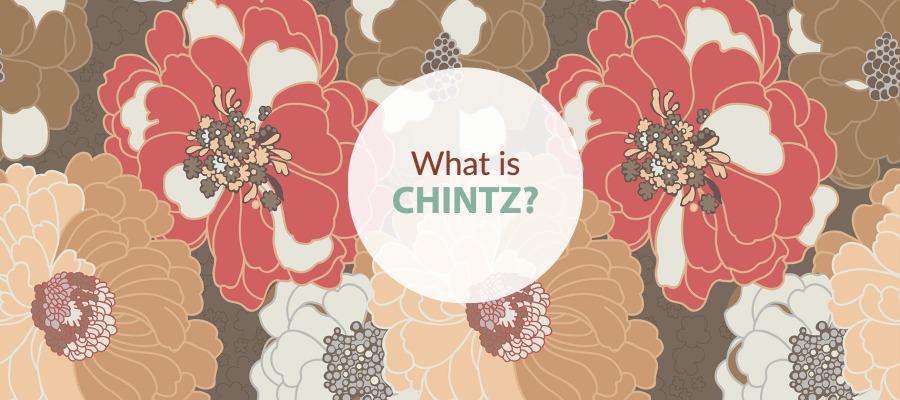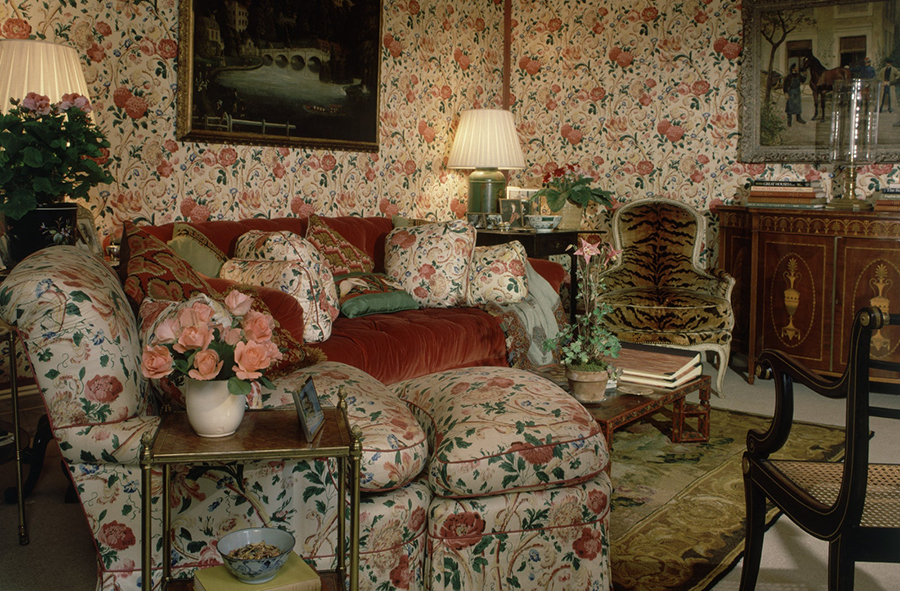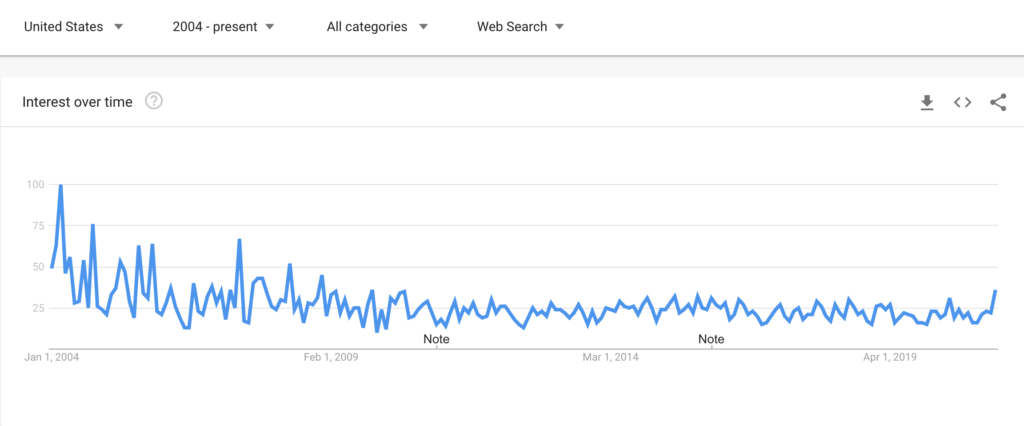
What is Chintz & is it Making a Comeback?
Chintz, glazed cotton prints, were the rage in over-the-top interiors in the 1980s and an excess associated with interior designer Mario Buatta, among others. This pattern-upon-pattern riot eventually died out, giving way to the minimalist and ubiquitous mid-century modern aesthetic –first in beige, and then in all white- we have been living with since.
Polychrome woodblock printed chintz was introduced to Europe in the 1600s when they were imported by the East India company. The word chintz comes from the Hindu word for color. At first, the Europeans did not know how to produce it themselves, but they eventually mastered it. By the early 19th century, they were using both cylinder and flatscreen printing to create the traditional looks we now associate with chintz, monochromatic scenics know as Toile de Jouy, multicolored ditzies (small patterns of delicate flowers and sprigs), as well as the larger more lushly drawn florals.
The look was very big in Versailles before the revolution and it has been coming in and out of favor since. Think: the Victorian era, the mid-forties with Hawaiian style prints, the restoration of the White House historical rooms by Jackie Kennedy, up to Lady Di’s influence on the 80s with her Laura Ashley dresses. Some recent trend spotting websites have been calling for a return of chintz after multicolored florals began reappearing on the runways starting in 2018. Coincidently, this was the same time Mario Buatta’s obituaries as the Prince of Chintz appeared in Architectural Digest. But is it a trend that is here to stay?
You can research trends by researching what consumers are searching.
Try this little trick the next time you would like to fact-check a declarative statement. Google has a website dedicated to the prevalence of search terms over time called Google Trends. Type in “chintz” and change the filters for specific dates and geographical locations. The results show a snapshot of the number of times people searched for “chintz” on Google.
As you can see, interest is pretty flat apart from a peak in 2004. So, no, the leap from the runway to the interior did not make it. Yet, suppose you no longer want monolithic white spaces punctuated by filigree black accents. You want pattern.
Henrietta Spencer-Churchill suggests the following for decorating with chintz patterns in her 1996 Classics Fabrics book.
- Small scale patterns look good as edging for curtains and pillows made of bolder patterns or solids. On their own, they are more suited to the bedroom than to living rooms where more impact is needed.
- Bold patterns with colored and textured grounds add warmth and depth to rooms. Make sure that the repeat size does not overwhelm the window or sofa that you are working with and anticipate fabric waste from centering the pattern.
- Choose the boldest pattern first, and then select the other patterns and wall colors using it as a guide.
For inspiration on a contemporary take on floral patterns with bold colors, check out The Designer’s Guild as seen below. And to customize your projects, search for floral in our licensable library. Have fun reintroducing pattern to your interiors!
Share this post
Author
DESIGN/COLOR TRENDS AND AWESOME INFORMATION IN YOUR INBOX
Sign up for our monthly trend letter









